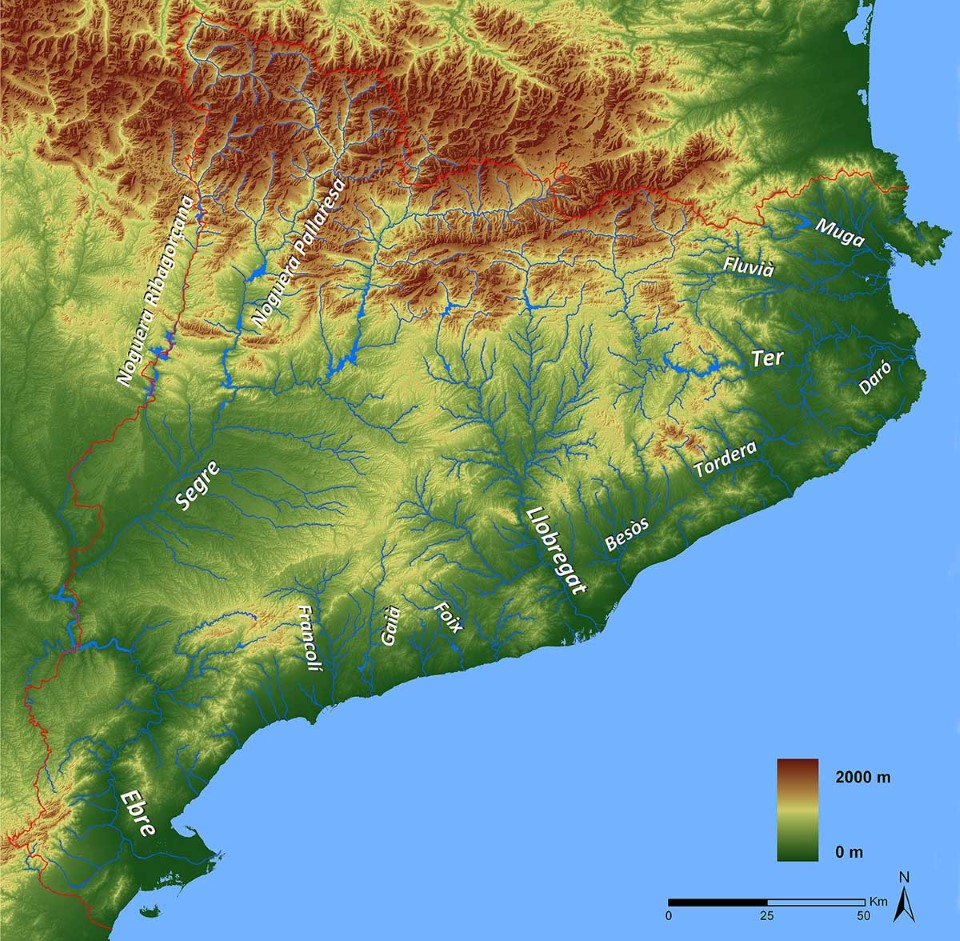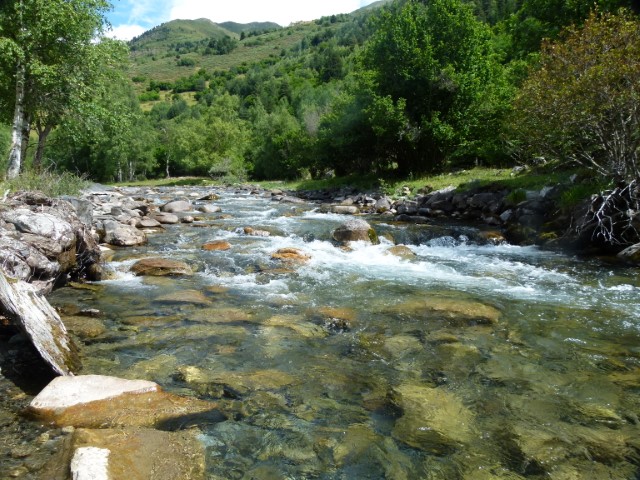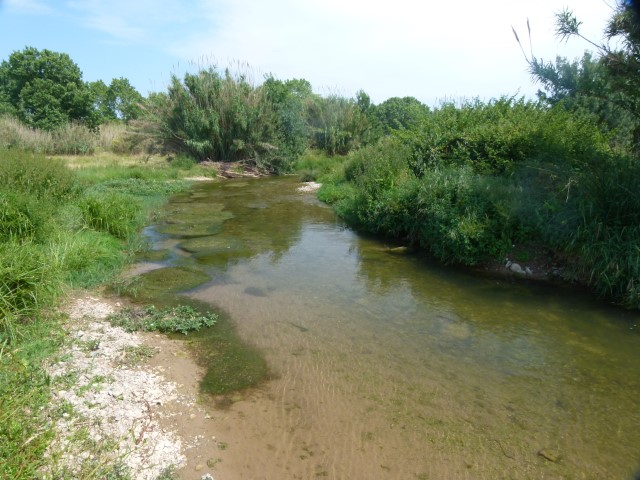The hydrological network
The river basins of Catalonia occupy approximately the 5,5% from the surface of the Iberian Peninsula. The mountainous terrain of Catalonia produces a relatively high number of river courses, but most are of sparse and irregular flows, and that in many cases tend to dry out during the summer months. Almost all rivers are on the Mediterranean side, except the rivers of the Aran Valley, draining into the Atlantic. There are some 30 large reservoirs, and a high number of glacial lakes in the higher parts of the Pyrenees. We can also find some karstic lakes, like those of Banyoles, Montcortès and Basturs, and numerous coastal lagoons and wetlands in the estuaries of the principal rivers.
The main rivers, from north to south, are the Muga, the Fluvià, the Ter, the Daró, the Tordera, the Besòs, the Llobregat, the Foix, the Gaià and the Francolí, which constitute the so-called internal basins. The rest of the rivers correspond to the Ebro basin and the Garonne basin. The Ebro basin includes the final stretch of the river Ebro and the Segre basin, with its main tributaries, the Noguera Pallaresa and the Noguera Ribagorçana. The Garonne basin is located at the northwestern end and, as stated before, it is on the Atlantic side.

Distribution of species
Inland waters include a wide variety of habitats and environments, such as freshwater rivers and lakes, and transition waters (river mouths, wetlands and coastal lagoons), which have more or less high levels of salinity due to their proximity to the sea. The main factors influencing the distribution of fishalong the river basins are the temperature, the slope and flow. According to ecological preferences, each species occupies one section or another. In the headwaters the number of fish is less than in the middle and lower stretches, near the mouth. This general pattern has been accentuated by the introduction of exotic species, most of which tend to occupy the lower stretches and of warmer temperatures.
High mountain rivers
In the higher parts of the rivers, near the source, the velocity of the current is high due to the steep slope and the waters are cold and well oxygenated all year round. The substrate consists of large rocks and stones, with some gravel areas in the pools. The typical fish are salmonids, such as brown trout or rainbow trout in the places where it has been introduced. In the rivers of the Aran Valley we also find the cavilat.

Middle mountain rivers
As the river loses altitude, the force of the current is smaller and the channel is basically constituted by pebbles and gravel, although we can also find some rocks and areas of sand. In these waters the most typical species are the mountain barbel (to the rivers from the Besòs basin to the north) and the red-tail barbel (from the Llobregat basin to La Sénia, including the Ebre basin). You can also find the Ebre nase, Catalan chub, the stone loach and, among the introduced species, minnows and gudgeons are common.

Low reaches
In the lower reaches of the rivers the flow of water is slow or moderate and experiences a greater warming during the summer months.. The river channel is wider and sometimes adopts a meandering pattern. In these stretches the number of species is usually higher. Among the natives, the most typical species of these environments are the Ebro barbel and the Freshwater blenny, although Catalan chub and Ebre nase can also be abundant. Fish introduced frequently in the lower reaches of rivers are, among others, the carp, pumpkinseed and bleak.

Estuaries
The mouths of the rivers form estuaries, deltas, wetlands and coastal lagoons. In these areas, the freshwater of the rivers mixes with that of the sea, forming environments of variable salinity and fairly warm waters in summer. The most abundant species are the mullets (Mugilidae) and the eel, and are also the typical habitat of two of the most endangered species of ichthyofauna in Catalonia: the Iberian toothcarp and the samaruc. Eastern mosquitofish and carp are often the most widespread introduced species in these environments.

